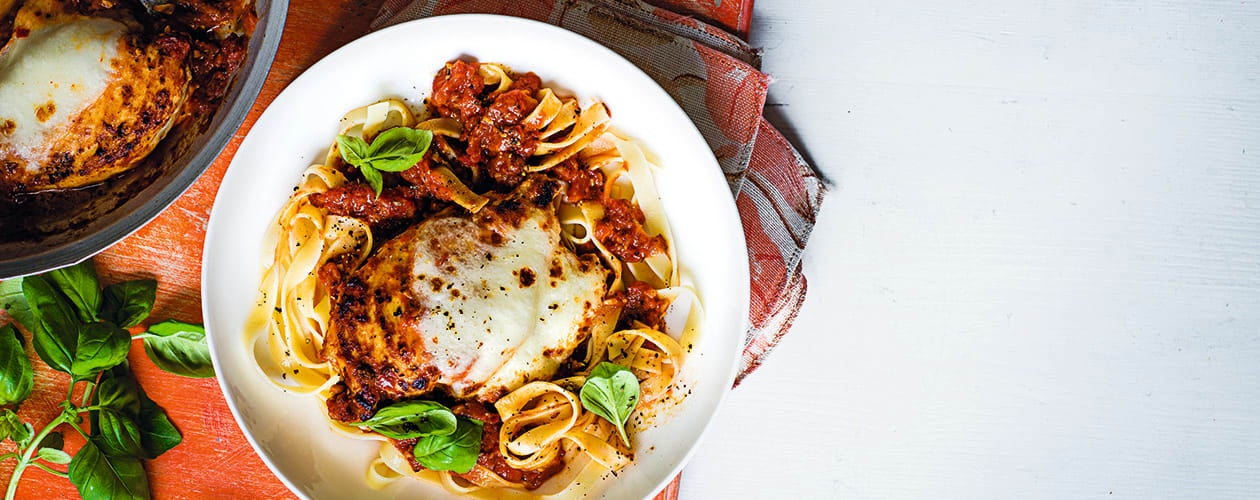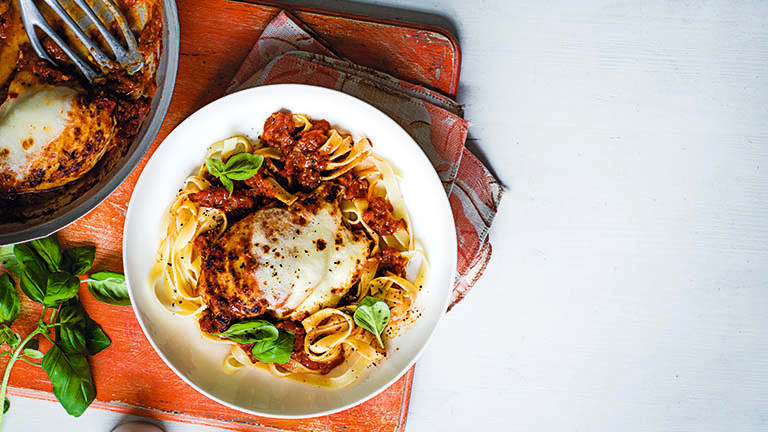Let’s go out for…Italian


Love Italian food? Us too!
The good news is, nothing's off the menu with WW. If you're a fan of Italian pasta, pizza and, well, everything on the menu, these tips will help you lighten up your favourite Italian dishes and stay on track with your healthy lifestyle plan.
Here’s to relishing real Italian, while toasting “salute” — to health!
Bread and antipasto
Use oil, not butter
Not only is olive oil a source of healthy monounsaturated fat, but a Cornell University study found that diners who used olive oil as a bread condiment ate 23 percent less bread than those who used butter. Just don’t soak the bread entirely; one dip is enough.
Don’t O.D. on lunch meat
A common meat antipasto is misto salumi, or Italian charcuterie that includes dried meats like the familiar prosciutto. While these meats are high in fat they usually come in very thin slices, and a thin slice can be satisfying because it’s intense in flavor. As ever, the key is moderation - and keeping track of your Points® using the WW app.
Consider going tapas
Why not make a tasting meal of antipasti? You can pick one indulgence, like risotto balls, and balance it with a number of healthier alternatives.
Don’t overlook soup
Soup is a main course in authentic Italian restaurants but you can also order it as an appetiser. Traditional Tuscan and Florentine soups, with combinations of escarole, beans, pasta and sausage, can be good alternatives to meat antipasti or salads filled with cheese.
Pasta and main course
Have your penne with protein
If it’s an option, pay a little extra to add chicken or shrimp to your pasta. Even though you’re adding something, you may find the dish more satisfying and eat less overall.
Go halves on pasta
Often, it’s not the pasta itself, but the portion that is most destructive to a healthy diet. You can order a half portion or order two different half portions - one that's more of an indulgence and one healthier choice.
Fill your plate with air
A hollow pasta will appear to give you a larger portion size than solid pasta, which may help you eat less of it while still feeling satisfied.
Be stingy with the cheese
If you fancy some Parmesan, ask the waiter to grind a small amount onto your pasta or sprinkle it on yourself - then get that cheese off your table! Otherwise, you’ll be tempted to keep spooning on more throughout your meal.
Understand gluten-free pasta
You’ll see this on more menus now, but gluten-free pasta isn't necessarily healthier or lower in calories than white or wholewheat pasta. Gluten-free foods were developed for people who have gluten intolerance (or Celiac Disease) and exclude wheat, barley, oats and rye. Unless you can’t tolerate gluten, there’s no benefit to ordering this pasta.
Italian sauces
Pasta sauce is the mainstay of many Italian dishes. While there are many varieties of pasta sauce, they fall into these main categories:
Alfredo
Made with heavy cream, butter and Parmesan cheese, Alfredo sauce could take its toll on your Points Budget. If you're an Alfredo sauce aficionado, try to balance the fat by choosing a dish with vegetables or protein, like pasta primavera with chicken.
Olive oil based sauces
Most “white” sauces that aren’t made with cheese use olive oil as the base, and is 'cut' with white wine or broth. A teaspoon of olive oil (approx. 6ml) is 2PP, but even a simple “oil and garlic” pasta dish may be slicked with up to 80ml of olive oil. That alone could exceed your daily Points Budget!
Pesto sauce
This northern Italian sauce is made with olive oil, pine nuts, garlic, basil and Parmesan cheese and generally has a high Points value. However, the strong flavour may mean you eat less of it than you would a regular tomato sauce. One tablespoon of green pesto clocks in at 2 Points. Try this one-pan pesto cod and rice recipe at home.
Tomato
Simple tomato sauce (known as salsa al pomodoro in southern Italy, or marinara in the UK) is usually a good choice.
Glossary
Al dente: This literally means “to the teeth,” but in everyday speak means you want your pasta firm in the center (not overcooked). Generally there's no need to ask for this in a quality restaurant; you can safely assume it will be cooked this way.
Arrabbiata: An spicy red tomato sauce from the region around Rome. Red chillies kick up the heat. All in all, a good choice.
Arrosto: Roasted.
Burrata: A decadent cheese from Puglia that’s filled with cream.
Caponata: Italy’s answer to ratatouille, this Sicilian dish of eggplant, garlic, peppers and other vegetables is served as an appetiser or as a companion to fish or bread.
Carbonara: A hearty meal of pasta with bacon, eggs and cheese. Try this Points-friendly wholewheat spaghetti carbonara at home.
Crudo: Literally “raw,” crudo on Italian menus often refers to raw fish in citrus and oil. Think ceviche.
Fra diavolo: This term meaning “brother devil” usually means a dish has red sauce spiked with fiery red pepper or cayenne.
Fresh pasta: Unlike dried pasta, fresh pasta is soft before cooking and includes a large number of egg yolks. It’s most popular for stuffed and shaped pastas that are made onsite.
Fritto: Fried.
Gnocchi: These Italian dumplings are made with potato.
Mozzarella di bufala: Cheese made from the milk of a water buffalo is higher in protein, fat and minerals than cow’s milk mozzarella.
Polenta: A creamy porridge made of ground cornmeal, which may be loaded with cheese or cream.
Zabaglione: An egg, liquor and sugar sauce that often dresses desserts or fruit.